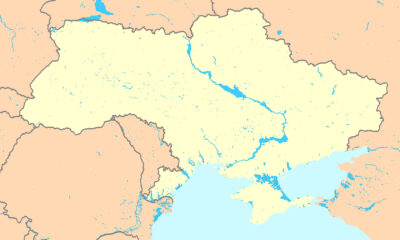Human Interest
Nearly 75% of U.S. counties lost population last year as deaths outnumber births

Almost three-quarters of all U.S. counties reported more deaths than births last year, a development largely caused by the pandemic, which contributed to a dramatic slowing in the nation’s overall population growth, according to data released Thursday by the Census Bureau.
Low fertility rates, which have persisted since the end of the Great Recession, and the continuing demographic shift toward an older population also combined to create the smallest population increase in 100 years, said Kenneth Johnson, a sociology professor and demographer at the University of New Hampshire.
“I think one of the most important findings is the fact that almost 2,300 counties had more deaths than births in them. That’s unheard of in American history,” Johnson said.
He said the coronavirus’s impact, along with longer-term trends that limited population growth, had created “a perfect storm,” and that one would have to go back at least to the 1918 flu pandemic to find anything like it.
Data also indicated that many Americans moved out of larger cities into rural areas. Los Angeles County lost 179,757 people in net domestic migration, while New York County lost 113,642.
California, Oregon and Mississippi had the most counties negatively affected by international migration losses, while Alaska, Louisiana and Illinois had the most counties affected by losses caused by domestic migration within the United States.
“I’m very surprised by this because I didn’t think it was going to be as dramatic, the domestic migration piece of it,” said William H. Frey, a senior fellow at the Brookings Institution, who analyzed the data and its impact on the Washington region. “It may be a blip, and I think it is, but it’s certainly noteworthy. I think that’s the bigger demographic pattern here.”
The data released Thursday covered roughly 3,140 counties, more than 380 metropolitan statistical areas and over 540 smaller locales known as micropolitan statistical areas. The period covered by the data, July 2020 to July 2021, also coincided with some of the peak rates of the spread of the coronavirus, as reflected in reported cases.
Terry A. Hurlbut has been a student of politics, philosophy, and science for more than 35 years. He is a graduate of Yale College and has served as a physician-level laboratory administrator in a 250-bed community hospital. He also is a serious student of the Bible, is conversant in its two primary original languages, and has followed the creation-science movement closely since 1993.
-

 Constitution4 days ago
Constitution4 days agoPrecinct Strategy scores again
-

 Education5 days ago
Education5 days agoTitle IX revision sparks State revolts
-

 Civilization3 days ago
Civilization3 days agoLegacy media already assume Trump wins
-

 Civilization3 days ago
Civilization3 days agoSCOTUS Is Last Bulwark Against Critical Legal Studies
-

 News4 days ago
News4 days agoTime to Fly – Really Fast
-

 Education4 days ago
Education4 days agoThe Road Back to Normalcy Starts Where the Problem Began: College Campuses
-

 Civilization3 days ago
Civilization3 days agoWhat 10 Years of U.S. Meddling in Ukraine Have Wrought (Spoiler Alert: Not Democracy)
-

 Executive3 days ago
Executive3 days agoFamine in Gaza? Its Food Supply Chain May Be Broken


